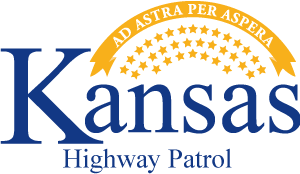KHP 2022-29: State Experts Urge Motorists to Use Caution During Peak Deer Season
This time of year marks the period when vehicle-deer collisions increase, and Kansas roadways are no exception. That’s why the Kansas Highway Patrol, Kansas Department of Transportation, Kansas Department of Wildlife and Parks, and AAA Kansas are offering helpful tips to assist drivers as they navigate Kansas roadways, including what to do if motorists have a collision with a deer.
“As the breeding season for deer approaches, and last year’s offspring disperse to find new home ranges, deer movement will soon increase at an exponential rate,” said Nadia Marji, Chief of Public Affairs and Engagement Officer for KDWP. “During the rut, Kansans should expect deer to be present on and near roadways at any time of day, but especially at dusk, dawn, and in areas with adequate food, water, and shelter.”
While the vast majority of vehicle-deer collisions do not result in serious injury, data collected by KDOT indicates that in 2021, six people were killed and 622 were injured in collisions involving deer.
“If you are unfortunate enough to have a deer enter the roadway in front of your car, it is best to hit the animal and not swerve to avoid it,” said KHP Lieutenant Candice Breshears. “Often, we find more serious crashes occur when you swerve to miss the deer, potentially losing control of your vehicle, leaving the road or veering into oncoming traffic.”
To avoid incurring costly vehicle repairs, or worse, state experts offer these helpful safety tips:
- Be especially watchful at dawn and dusk when deer are more active.
- If you see one deer, expect others, as deer seldom travel alone.
- Be extra vigilant and reduce vehicle speeds near wooded areas or green spaces, such as parks and golf courses, and near water sources such as streams and ponds.
- Deer crossing signs show areas where high numbers of vehicle-deer collisions have occurred in the past; be extra cautious in these areas.
- Do not swerve to avoid hitting a deer. The most serious crashes can occur when motorists veer into oncoming traffic and collide with another vehicle; or run off the road, hit objects, or overturn.
- Always wear a seatbelt and use appropriate child safety seats, as these are the best defenses in any collision.
- Use bright headlights when there is no oncoming traffic and scan the roadways ahead for the reflective eyes of deer.
- If a collision occurs, move your vehicle to the shoulder of the roadway, if possible, and call law enforcement – KHP dispatch at *47, the Kansas Turnpike at *KTA or local law enforcement at 911.
- Remain in your vehicle with your seatbelt fastened. If a secondary collision would occur, motorists are better protected when inside their vehicles and properly restrained.
“In addition to potentially causing human injuries and loss of life, deer collisions often cause significant vehicle damage that can lead to large expenses for the vehicle owner if not properly insured,” said Shawn Steward, public and governmental affairs manager for AAA Kansas. “Of the animal strikes reported by Kansas AAA Insurance policy holders in 2021, the average cost per claim was nearly $6,100, an increase of more than 11% per claim from 2020.”
Steward attributes the higher repair costs to advanced driver assistance technology and sensors and calibration requirements in newer vehicles. Insurance for animal collisions is part of the comprehensive portion of auto insurance policies. To make sure that your policy includes comprehensive insurance or to add it, consult with your agent or provider.
Anyone involved in a collision with a deer resulting in personal injury or property damage that totals $1,000 or more is required to immediately report the incident to the nearest law enforcement agency.
To remove a deer carcass, or any part of a deer, from a collision site, a salvage tag must first be obtained. Salvage tags can be issued by KDWP game wardens, sheriff’s deputies, or KHP Troopers.
This fall season, remain as safe as possible in your vehicle by staying alert, slowing down, and eliminating distractions while driving.
CONTACT: Lieutenant Candice Breshears, KHP PIO, (785) 296-6800
KDOT: Kim Stich, Kim.Stich@ks.gov
KDWP: Nadia Marji, Nadia.Marji@ks.gov
AAA: Shawn Steward, ssteward@aaa-alliedgroup.com

